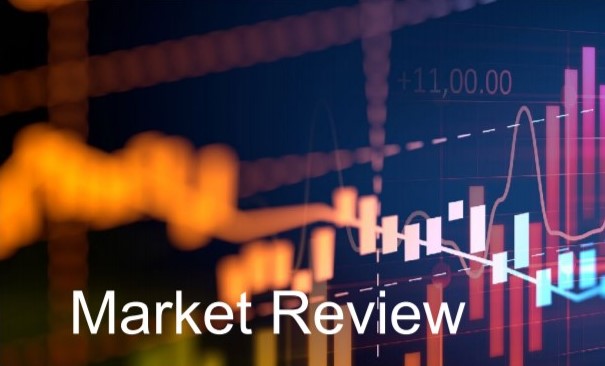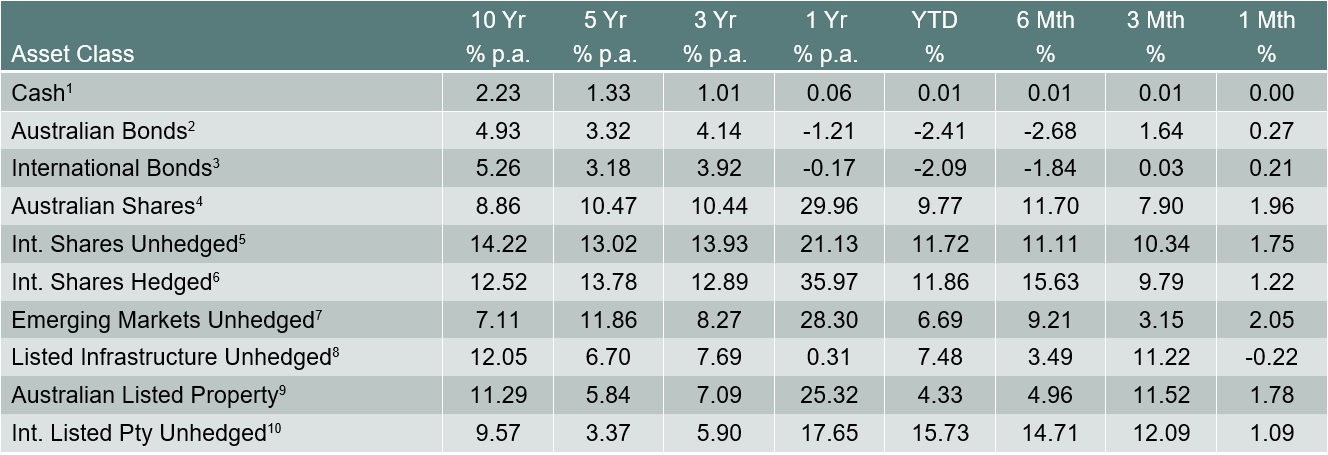
Responsible, ethical or sustainable investing – putting your money into companies or sectors that are aligned with your values – has been around for many years.

Responsible, ethical or sustainable investing – putting your money into companies or sectors that are aligned with your values – has been around for many years.

While all Australians have been affected in some way by the global pandemic, women have borne the brunt of its impacts. Here are why – and some tips of what women can do to recover financially.

In this checklist, we highlight some key questions you should be considering when assessing your personal finances

The principle of ‘salary sacrificing’ may not sound very appealing. After all, who in their right mind would voluntarily give up their hard-earned cash. But it can have real financial benefits for some in terms of reducing your taxable income, which could see you pay less at tax time.
As we nudge ever closer to the end of the financial year, it’s worth taking a look at salary sacrificing to see if it’s a worthwhile strategy to put into place for you.
A salary sacrifice arrangement is also commonly referred to as salary packaging or total remuneration packaging. In essence, a salary sacrifice arrangement is when you agree to receive less income before tax, in return for your employer providing you with benefits of similar value. You’re basically using your pre-tax salary to buy something you would normally purchase with your after-tax pay.
The main benefit of salary sacrificing is that it reduces your pre-tax income, and therefore the amount of tax you must pay. For example, if you’re on a $100,000 income, you may agree to only receive $75,000 as income in return for a $25,000 car as a benefit.
Doing this would reduce your taxable income to $75,000 which could lower your tax bill because you’re essentially earning less as far as the tax office is concerned.*
This arrangement must be set up in advance with your employer before you commence the work that you’ll be paid for and it’s advisable that the details of the agreement are outlined in writing.
According to the Australian Tax Office (ATO), there’s no restriction on the types of benefits you can sacrifice, as long as the benefits form part of your remuneration. What you can salary sacrifice may also depend on what your employer offers.
The types of benefits provided in a salary sacrifice arrangement include fringe benefits, exempt benefits and superannuation.
Fringe benefits can include:
Your employer pays fringe benefit tax (FBT) on these benefits.
Exempt benefits include work-related items such as:
Your employer typically does not have to pay fringe benefits tax on these.
You can also ask your employer to pay part of your pre-tax salary into your superannuation account. This is on top of the contributions your employer is already paying you under the Superannuation Guarantee, which should be no less than 9.5% of your gross (before tax) annual salary, though this may rise in the near future.
Salary sacrificed super contributions are classified as employer super contributions rather than employee contributions. These contributions are called concessional contributions and are taxed at 15 per cent. For most people, this will be lower than their marginal tax rate.
There is a limit as to how much extra you can contribute to your super per year at the 15 per cent tax rate. The combined total of your employer and any salary sacrificed concessional contributions cannot exceed $25,000 in a single financial year. If you exceed the cap, you could be charged additional tax on any excess salary sacrifice contributions.
Most employers allow employees to salary sacrifice in super, but not all employers will allow salary sacrificing for other benefits.
Salary sacrifice is generally most effective for middle to high-income earners, while there is little to no tax saving for people who are already in a low tax bracket.
If you are a middle to high-income earner, then it may be worth considering salary sacrifice to reduce your taxable income and to take advantage of some of those benefits.
Before you do, make sure you talk to us so we can help ensure it is an appropriate strategy for your circumstances.
*Note: This example illustrates how salary sacrifice arrangements can work and does not constitute advice. You should not act solely on the information in this example.
Source for all information in this article: https://www.ato.gov.au/General/Fringe-benefits-tax-(FBT)/Salary-sacrifice-arrangements/

In this tip sheet, we share our top 10 strategies for you to consider for the end of this financial year.


1 Bloomberg AusBond Bank 0+Y TR AUD, 2 Bloomberg AusBond Composite 0+Y TR AUD, 3 Bloomberg Barclays Global Aggregate TR Hdg AUD, 4 S&P/ASX All Ordinaries TR, 5 Vanguard International Shares Index, 6 Vanguard Intl Shares Index Hdg AUD TR, 7 Vanguard Emerging Markets Shares Index, 8 FTSE Developed Core Infrastructure 50/50 NR AUD, 9 S&P/ASX 300 AREIT TR, 10 FTSE EPRA/NAREIT Global REITs NR AUD
May was a volatile month for equity markets. Inflation worries caused a fall in the first half of the month with the ASX All Ords down -1.83% at one stage. It rebounded strongly in the second half of the month, posting a 1.96% gain at the close of May. This was an impressive 3.75% rebound from the lows of the month. International equities in both developed and emerging markets also had a strong end to the month as inflation worries eased.
In the first half of the month, inflation worries were at the forefront of investors’ minds due to strong commodity prices and supply chain constraints. Commodity price increases were widespread across several areas such as steel, lumber, oil and corn. Iron ore and copper rallied to all-time highs in mid-May. Commodity prices generally surge following a recession. This is because firms cut back during a recession and cannot ramp up production as quickly once demand comes back. Supply chain constraints also saw shortages of certain goods leading to an increase in prices. Notable was the shortage in new cars and price rises the second-hand car market. These factors contributed to the initial losses in the ASX early in the month, as investors worried about the impact of higher inflation on equity markets. Historically higher inflation has been a negative for equities in the short to medium term, as companies dealt with higher input prices and the potential increase in interest / borrowing rates.
During the second half of the month, inflation worries lessened as investors questioned whether the uptick will just be transitory due to the opening of economies. Commodities fell from their highs and cryptocurrencies saw a sharp decline as China signaled their intention to curb commodity price rises and implement greater scrutiny over cryptocurrencies. Bitcoin fell from a high of $58.9k to $34.7k within the month – a decline of over -41.0%.
Global and domestic bond yields remained stable over May. However, there were early indications that many central banks may start tapering sooner than expected given the recent economic data.
COVID concerns remain at the forefront. While case numbers across the world have been declining, there is no room for complacency as evidenced by the recent lockdown in Melbourne. Concerningly, other countries such as Vietnam and Taiwan, which have been successful in dealing with COVID have seen renewed increases in the number of cases. The vaccine roll-out continues across the world. Approximately 8.0% of the population of emerging countries have been vaccinated vs 38.0% in developed countries.
Notwithstanding the recent lockdowns in Melbourne the Australian economy has grown with employment now above pre-COVID levels. The Federal government announced its 2021-22 budget, which will be stimulatory, with an expected deficit of $161 billion. Fortunately, the higher iron ore prices and stronger economic growth will help fund part of the budget rather than the Australian government issuing a massive supply of bonds.
Going forward, key risks include inflation scares, the persistent spread of COVID, the effectiveness of vaccines against new variants and geopolitical tensions. However, with the vaccine rollout, opening of economies, fiscal stimulus, and rates still at low levels, the local and global economies look well placed to continuing growing.
The Australian dollar has been steadily weakening since mid-May with the fall in commodity prices.
Disclaimer
The information contained in this material is current as at date of publication unless otherwise specified and is provided by ClearView Financial Advice Pty Ltd ABN 89 133 593 012, AFS Licence No. 331367 (ClearView) and Matrix Planning Solutions Limited ABN 45 087 470 200, AFS Licence No. 238 256 (Matrix). Any advice contained in this material is general advice only and has been prepared without taking account of any person’s objectives, financial situation or needs. Before acting on any such information, a person should consider its appropriateness, having regard to their objectives, financial situation and needs. In preparing this material, ClearView and Matrix have relied on publicly available information and sources believed to be reliable. Except as otherwise stated, the information has not been independently verified by ClearView or Matrix. While due care and attention has been exercised in the preparation of the material, ClearView and Matrix give no representation, warranty (express or implied) as to the accuracy, completeness or reliability of the information. The information in this document is also not intended to be a complete statement or summary of the industry, markets, securities or developments referred to in the material. Any opinions expressed in this material, including as to future matters, may be subject to change. Opinions as to future matters are predictive in nature and may be affected by inaccurate assumptions or by known or unknown risks and uncertainties and may differ materially from results ultimately achieved. Past performance is not an indicator of future performance.

Halving of pension minimums for FY2022
On the 29th of May, the federal government announced an extension of the temporary reduction in superannuation minimum drawdown rates for a further year to 30 June 2022.
|
Age |
Reduced percentage factor for 2019/20, 2020/21 and 2021/22 | Normal percentage factor |
|
Under 65 |
2% |
4% |
|
65–74 |
2.50% | 5% |
|
75–79 |
3% |
6% |
|
80–84 |
3.50% |
7% |
|
85–89 |
4.50% |
9% |
| 90–94 | 5.50% |
11% |
| 95 or more | 7% |
14% |
The government says their aim is to make life easier for retirees by giving them more flexibility and choice in their retirement. This extension builds on the additional flexibility announced in the 2021-22 Budget.
There is no action that needs to be taken until the new financial year.
For existing clients, we will be reaching out to those of you affected by this change. In the meantime, if you wish to discuss please do not hesitate to contact us.

MoneySmart
(ASIC)
Some of the things you’ll need to consider when choosing an income protection policy are:
Income protection policies are provided as either an:
This is the amount of time you must wait before your payments start. Most income protection policies offer a waiting period between 14 days and two years.
In general, the longer the waiting period, the cheaper the policy. When you’re choosing the waiting period, think about how much you have in sick and annual leave, savings and emergency funds.
The benefit period is how long the monthly payments will last. Most income protection policies offer two or five years, or up to a specific age (such as 65). The longer the benefit period, the more expensive the policy. But it also means greater protection if you’re unable to work for a longer time.
You can generally choose to pay for income protection insurance with either:
Your choice of stepped or level premiums has a large impact on how much your premiums will cost now and in the future.
If you would like to discuss what income protection options are available for you, please reach out to the Sherlock Wealth team to discuss your unique situation here

A permanent injury or illness can make it difficult or impossible to return work. TPD insurance can provide a financial safety net to help support you and your family, and pay for medical and rehabilitation costs.
TPD insurance pays a lump sum if you become totally and permanently disabled because of illness or injury.
Each insurer has a different definition of what it means to be totally and permanently disabled. It can cover you for either:
Read the product disclosure statement (PDS) so you know how your insurer defines a total and permanent disability. Call the insurer or your super fund if you have questions about the policy.
When deciding if you need TPD insurance, and how much, think about the expenses you’ll need to cover if you were permanently disabled and unable to work. These could include:
Also, think about what you have that could help pay for these costs. This could include:
The gap between the amount you have and the amount you’ll need can be a guide as to how much TPD cover you may need.
If you need help deciding if you need TPD insurance, and how much, speak to a financial adviser.
Check if you already hold TPD insurance through your super. Most super funds offer default TPD cover that’s cheaper than buying it directly. You can increase your level of cover through your super fund if you need to.
You can also buy TPD insurance from:
TPD insurance can be bought on its own or packaged with life cover. If it’s packaged, your life cover may be reduced by any amount paid out on a TPD claim. Check the PDS or ask your insurer.
Before buying, renewing or switching insurance, check if the policy will cover you for claims associated with COVID-19.
You can generally choose to pay for TPD insurance with either:
Your choice of stepped or level premiums has a large impact on how much your premiums will cost now and in the future.
Before you buy TPD insurance, compare policies to make sure you get the right one for you. Check:
A cheaper policy may have more exclusions, or it may become more expensive in the future.
Use our Life insurance claims comparison tool
Compare how long different insurers take to pay a TPD claim and the percentage of claims they pay out.
You need to tell your insurer anything that could affect their decision to provide you with TPD insurance. You need to give them this information when you apply, renew or change your level of cover.
Insurers usually ask for information about your:
If an insurer doesn’t ask for your medical history, it may mean their policy has more exclusions or narrower policy definitions.
The information you provide will help the insurer to decide:
It is important that you answer the questions honestly. Providing misleading answers could lead an insurer to decline a claim you make.
Please reach out to the Sherlock Wealth team to discuss what insurance cover you may need here.
MoneySmart
(ASIC)